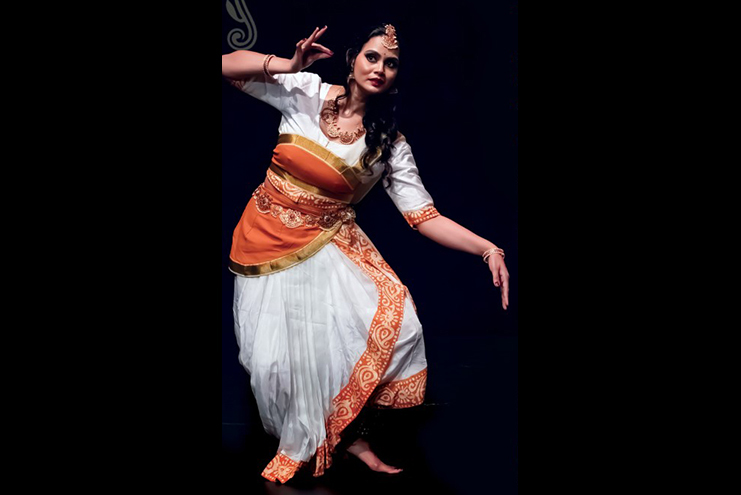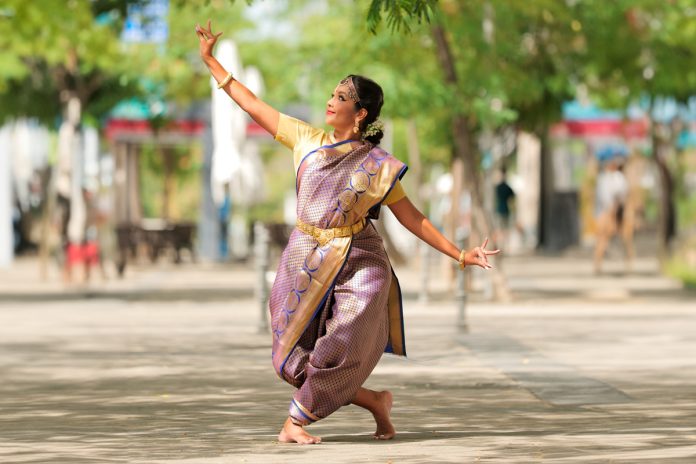In Indian classical dance, each movement is invested with grace, rhythm, and symbolism. Among the numerous complex aspects, Paadachari denotes the multitude of ways a dancer moves on stage. These styles of walking not only beautify the performance but also express emotions, characters, and moods.
Paadachari is not just about movement; it’s about breathing life into a character’s journey on stage.
There are eight specific forms of Paadachari, each possessing a unique technique and expression:
1. Chalanachaari
This is a relaxed and natural walk, sometimes employed to illustrate natural movement. It provides fluidity to the dance, with transitions looking easy and elegant.
2. Chankramanachaari
Here, the dancer walks maintaining the legs sideways. It is usually utilized to illustrate alertness or a character approaching cautiously.
3. Saranachaari
Here, the dancer keeps one foot back and brings the other alongside without taking the heel of the ground. This is a grounded and quiet movement that is employed to show submission or humility.
4. Veginichaari
This is an energetic walk in which the dancer moves alternatively between alapadma and tripataka hasta (hand movements). It adds energy and dynamism to the performance, ideal for illustrating urgency or excitement.
5. Kuttanachaari
In this manner, the dance progresses with the dancer walking and stamping the feet firmly upon the ground. The rhythmic stamping introduces a forceful sound effect, frequently employed to represent anger, purpose, or forcefulness.
6. Lunthitachaari
The dance starts in Swastikamandala (crossed-leg position) and executes kuttanachaari using the front leg. It is a union of power and accuracy, which makes for a powerful effect.
7. Lolithachaari
It entails doing kuttanachaari on one leg while slow-walking on the other. It is graceful and is commonly employed to demonstrate dainty or playful moods.
8. Vishamachaari
The dancer walks while the legs are crossed in a twisted manner in this particular style, giving an impression of intricateness and stylization. It is employed to describe characters or moods that are unusual or complex.

Why Paadachari Matters in Dance
Every Paadachari is not merely a style of walking, it is an expression tool by which dancers can adopt various characters and moods. By learning the variations, dancers can turn a mere walk into a narrative element, making their storyline and visual effect richer.
Tips for Learners to Master Paadachari
- Practice with Rhythm – Coordinate your steps with the beats (tala) to maintain harmony.
- Focus on Posture – Keep the spine straight and movements controlled for elegance.
- Use Facial Expressions – Combine the walking style with appropriate expressions (abhinaya) to convey the right emotion.
- Strengthen Your Legs – Regular practice of mandalas (stances) and footwork exercises will build stamina and balance.
- Observe and Learn – Watch experienced dancers perform to understand the subtle nuances of each Paadachari.
- Blend Grace with Energy – While some walks demand power, others require delicacy, learn to switch seamlessly.Seek Feedback – Practice under the guidance of a guru who can refine your technique.
Have you ever witnessed a beautiful performance of any Paadachari on stage? Share your experiences in the comments!


